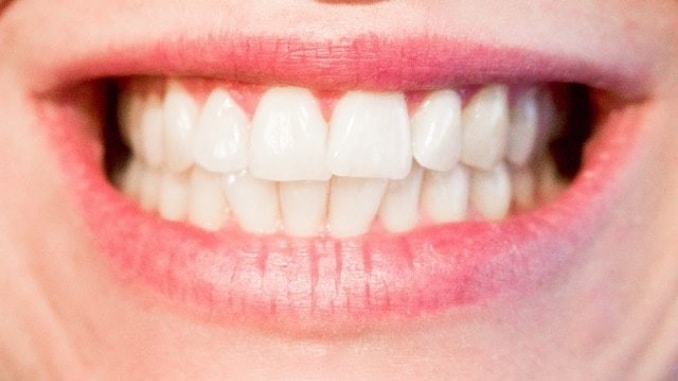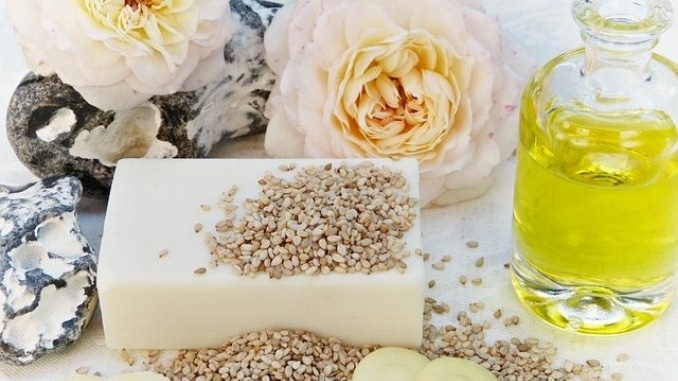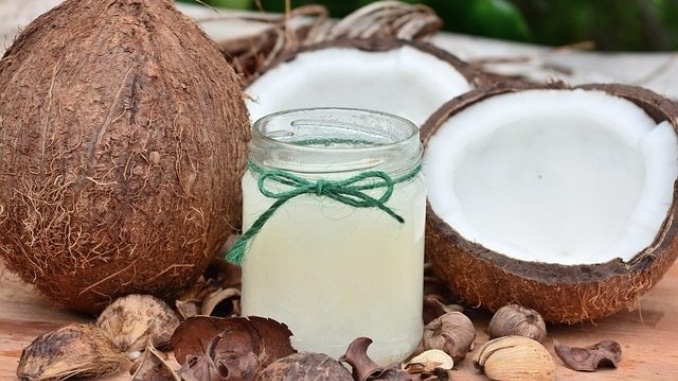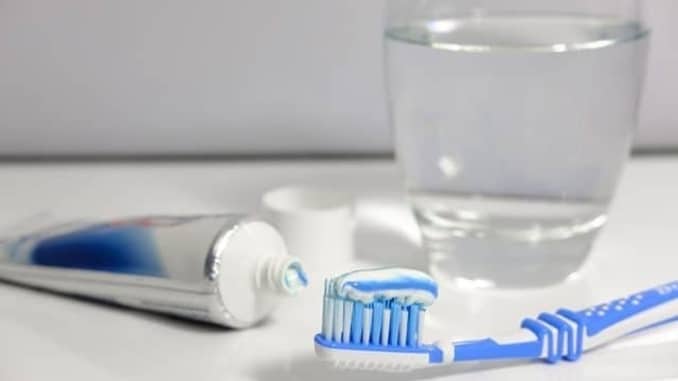
For decades, we’ve been told that the only thing we need to do to have healthy teeth and gums is to brush twice a day and floss at least once.
However, in the past several years, a practice called “oil pulling” has become more popular, with proponents stating it does everything from clean teeth clean to prevent gum disease. Although any edible oil can be used, coconut oil has risen to the top as one of the most commonly recommended oils for the practice.
Is this something you should be doing to care about your own oral health?
How Ancient Populations Cleaned Their Teeth
Centuries ago, Ayurveda recommended chewing herbal sticks every morning and evening as well as after each meal to help prevent health problems in the mouth. These sticks were to be obtained from the fresh stems of specific plants, with neem (a tree native to India and neighboring countries) being one of the most popular.
As the user chewed on these stems, it was believed that the action of biting along with the saliva helped break down the active components in the plant, releasing the stem’s antibacterial, anti-inflammatory, and other beneficial properties.
Other popular plants for this purpose included licorice, black catechu (cutch tree), margosa tree, Arjuna tree, fever nut, and milkweed plant. The practice of chewing plant-based sticks was used in other areas of the world too as a way to keep teeth and gums healthy. In southern India, the mango leaf was used for cleaning teeth, and in Islamic hygiene, the miswak — a twig made from the Salvadora persica tree — was also a teeth-cleaning twig.
Modern-day research has discovered that all of the chewing sticks described in ancient Ayurveda texts (circa 200 B.C.) have medicinal and even anticarcinogenic properties. One study, for example, found that neem extract had a more powerful action against plaque on the teeth than did Ayurvedic tooth powders or even commercial toothpaste.
In another modern-day study on the effects of miswak compared with toothbrushes, researchers found that miswak was gentler on tooth enamel than the toothbrush. They also found that miswak was effective against bacteria like Streptococcus mutans and lactobacilli.
Oil pulling is a similar sort of cleaning technique also mentioned in ancient Ayurvedic text, believed to help prevent tooth decay, treat bleeding gums and tame bad breath.
What Is Oil Pulling?
Oil pulling, no matter what oil is used, has been around for centuries, with texts mentioning it dating more than 3,000 years ago. Ayurvedic practitioners advised their followers to swish and hold about a tablespoon of a plant-based oil ― a teaspoon for children age five and older ― in the mouth for extended periods of time, usually between five and 20 minutes. This was believed to provide a number of oral health benefits, including killing bacteria, preventing cavities and reducing gum inflammation.
Some of the most popular oils traditionally used in oil pulling included sesame and sunflower. Both were prescribed to treat mouth dryness, gum inflammation, and other oral problems. Contrary to the fast 30-second to one-minute brushing that most of us usually practice today, oil pulling required a more time-intensive commitment to cleaning — one that was believed to be worth it because of the wide range of benefits. That recommendation continues to this day as it’s believed the oil needs that time to draw the impurities out of the mouth.
As one swishes with the oil, antioxidants in the oil damage the cell walls of microorganisms and kill them. The oil also attracts the fat layer in bacterial cell membranes, causing them to “stick” to the oil and later, be rinsed away. As the oil mixes with the saliva, it becomes emulsified, coating the teeth and gums and increasing effectiveness. Holding the oil in the mouth this way is also believed to help treat dry mouth and smooth chapped lips.
Does Oil Pulling Work?
The American Dental Association (ADA), in their policy statement on “unconventional dentistry,” state that practices like oil pulling are scientifically unproven and “do not conform to generally accepted dental practices or ‘conventional’ methods of evaluation, diagnosis, prevention and/or treatment of diseases, conditions and/or dysfunctions relating to the oral cavity and its associated structures.”
There are, however, a few small studies showing that oil pulling may have some benefits. In 2009, for example, researchers reported that oil-pulling therapy helped reduce plaque, gingivitis, and microorganisms in the mouths of teens who were already suffering from gum disease.
For the study, scientists split 20 adolescent boys with gingivitis, or gum disease, into two groups — an oil-pulling group and a control group. The study group used sesame oil and practiced oil pulling, and the control group used an antibacterial mouthwash every day before brushing. After 10 days, scientists checked the plaque on the subjects’ teeth.
Results showed that there was a significant reduction of plaque and improved gingivitis in both groups, showing the oil pulling worked as well as the mouthwash did.
In a 2014 study, researchers split 60 college students into two groups — one that engaged in oil pulling with sesame oil, and a control group that used mouthwash. Scientists tested for the presence of gingivitis and plaque on the teeth at the beginning of the study, then again 22 days later. They found that both groups experienced a reduction in all problems, showing that both methods were effective.
A third study showed similar results, although this study also found that both methods were effective against bad breath. A small study of only 10 participants published in 2007 showed that oil pulling helped improve gingivitis, although the researchers noted that tooth brushing was still the most reliable method for controlling gum health. They suggested oil pulling be used only as an add-on method for maintaining oral health.
Is Oil Pulling With Coconut Oil More Effective?
While the studies above all used sesame oil — one of the main oils recommended in traditional Ayurvedic medicine — other studies have used coconut oil, which has become more popular in recent years as an oil-pulling tool.
Coconut oil is thought to be particularly helpful because it contains lauric acid, which reacts with saliva to form a soap-like substance that reduces plaque accumulation. In essence, it “cleans” teeth. In fact, coconut oil is one of the most commonly used oils in making soap.
Lauric acid has antimicrobial and anti-inflammatory properties — effective against Streptococcus mutans, Candida albicans, Helicobacter pylori, Escherichia vulneris, and Enterobacter — so it may help prevent cavities and gum disease. It may also be effective against mouth sores. Other studies have found that coconut oil can help heal wounds because of its anti-inflammatory and antiseptic properties.
Another benefit with coconut oil is that many believe it has a better taste than other oils commonly used for oil pulling. Because of its moisturizing properties, it can also help make lips feel softer.
In one study on coconut oil pulling, researchers analyzed 60 teenagers between the ages of 16 and 18 who had gingivitis. They all included oil pulling in their regular oral hygiene routines. After seven days, the researchers found a significant decrease in the gum disease that continued to decrease throughout the 30 days of the study.
They wrote that coconut oil pulling could be used together with standard oral hygiene techniques ― like brushing and flossing ― to help improve oral health. “This preliminary study shows that coconut oil is a usable, safe and cost-effective agent with minimal side effects which can be used as an adjuvant in oral hygiene maintenance.”
Scientists have also compared oil pulling with coconut oil and sesame oil in subjects with gum disease. In one study, they had 20 participants use coconut oil along with their regular tooth brushing while another 20 use sesame oil along with their regular tooth brushing. The third group of 20 used toothbrushing alone.
Results showed that both oil-pulling groups experienced a significant reduction in the severity of gingivitis while the tooth brushing-alone group experienced only a mild reduction. Researchers also found that there was a greater reduction in those using coconut oil than those using sesame oil. They concluded that oil pulling was effective when added to a regular oral hygiene practice and that coconut oil was “very effective” compared to sesame oil in the reduction of the severity of gum disease.
Are There Any Safety Risks to Oil Pulling?
It’s important to note that most of the studies mentioned here are considered to be small, containing 60 participants or less. To truly establish oil pulling as an effective method for protecting oral health, scientists typically demand much larger studies showing a significant benefit.
In a 2016 review, for instance, researchers checked 26 studies on the practice and found only “limited evidence” suggesting that oil pulling had beneficial effects on oral health and that all were conducted during a short period. They did acknowledge, however, that the practice is a “potentially cost-effective intervention,” and suggested future, more rigorous trials.
In a later 2017 review of 21 studies, scientists again noted that only six of them had “proper study design,” and concluded that many were unreliable and had too small a sample size. They concluded that scientific evidence was lacking to support the efficacy of oil pulling.
Nevertheless, considering the evidence we do have, if you would like to try oil pulling, the question is: Is it safe?
In general, oil pulling is considered to be very safe as long as the user doesn’t swallow the oil. Doing so can lead to stomach upset, particularly diarrhea or indigestion. Also, it’s important to be sure that one isn’t allergic to the oils and to select quality oils. Some made specifically for oil pulling are not food-grade oils, so they’re not tested for purity and may contain harmful additives. Finally, it’s best to use oil pulling in addition to rather than in place of brushing and flossing. Those who stop brushing and flossing could be putting themselves at a higher risk for cavities and gum disease.
Oil Pulling Tips
To get the most out of your oil-pulling practice, follow these tips:
- Keep brushing: Don’t replace your current oral hygiene routine with oil pulling as brushing and flossing or using a water irrigator are still considered the most effective ways of keeping the mouth clean and healthy.
- Use about a tablespoon: A tablespoon is the standard recommended amount of oil to use, but everyone is unique. If that seems like too much to you, you can use less.
- Start small: Until you get used to it, spend only five minutes or less swishing the oil. The longer you use it, the more effective it’s supposed to be, but it takes some getting used to. For some, it doesn’t taste that great. For others, it can cause the jaw to ache, so limit your time until you build up the swishing muscles.
- Choose your oil: Because different oils have different tastes, you can experiment to see which works best for you. Options include sesame oil, coconut oil, olive oil, and sunflower oil.
- Never swallow: Always spit the oil out when you’re finished.
- Swish gently: Don’t work too hard while you’re swishing. Swish, push and suck the oil through your teeth easily. If it seems too hard, you may have too much oil in your mouth. Spit some out and try again.
- Use the trash can: Oils can clog your pipes, so it may be best to spit the oil out in your nearest trash can rather than in the sink or the toilet.
- Rinse your mouth again: After you spit out the oil, rinse your mouth well with water.
For your guide to the best foods to heal your body, check out The Best Foods that Rapidly Slim & Heal in 7 Days, here!






